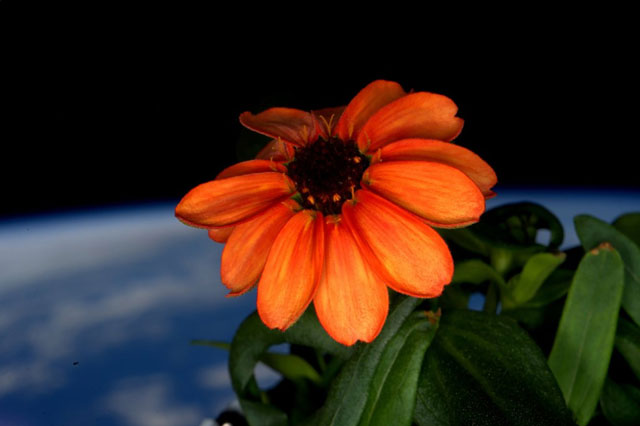
"First flower even grown in space makes its debut," US astronaut Scott Kelly wrote on Twitter, with a photo of the flower.
#SpaceFlower out in the sun for the first time! #YearInSpace pic.twitter.com/Cghu9XGv1J
— Scott Kelly (@StationCDRKelly) January 17, 2016
How does your garden grow? Here's how my #spaceflower came to bloom: https://t.co/DbmTqqJopf #YearInSpace pic.twitter.com/kl1bxI96PJ
— Scott Kelly (@StationCDRKelly) January 16, 2016
Zinnias grow easily on Earth and blossom in abundance in summer. But on the ISS, where they were taken to carry out experiments, they have had trouble adapting to microgravity.
NASA wants to grow potatoes on Mars
Several were doing poorly back in December as mold grew on some of their their leaves because of high humidity, NASA said.
But Kelly was seemingly able to nurture them back to health.
Growing such flowers -- zinnias are edible -- is part of a long term NASA project known as Veggie.
It is designed to produce food with an eye to long, manned missions to Mars. Such autonomy is key to astronauts' survival in space, NASA says.
 A bright orange zinnia has blossomed aboard the International Space Station, marking a first in space after initially having trouble adapting to microgravity. PHOTO: AFP
A bright orange zinnia has blossomed aboard the International Space Station, marking a first in space after initially having trouble adapting to microgravity. PHOTO: AFPCrew on the ISS have already grown and eaten lettuce last year aboard the orbiting craft and hope to produce tomatoes by next year.
Growing vegetables on the space station began in mid-2014.
They are grown aeroponically -- without soil, in an air or mist environment.
NASA adds commercial mini-shuttle to station supply fleet
The system requires much less water and fertilizer, and plants grow three times faster than on Earth, NASA says.
Gioia Massa, a scientist working on the Veggie project, said the plants grown so far are not perfect but have helped researchers on Earth understand better how they grow in conditions of microgravity.

1731588327-0/BeFunky-collage-(59)1731588327-0-165x106.webp)
1731587470-0/lady-gaga-(2)1731587470-0-165x106.webp)

1727341229-0/diddy-(13)1727341229-0-165x106.webp)




1731577079-0/Untitled-design-(9)1731577079-0-270x192.webp)
1731571819-0/Copy-of-Untitled-(40)1731571819-0-270x192.webp)






COMMENTS
Comments are moderated and generally will be posted if they are on-topic and not abusive.
For more information, please see our Comments FAQ